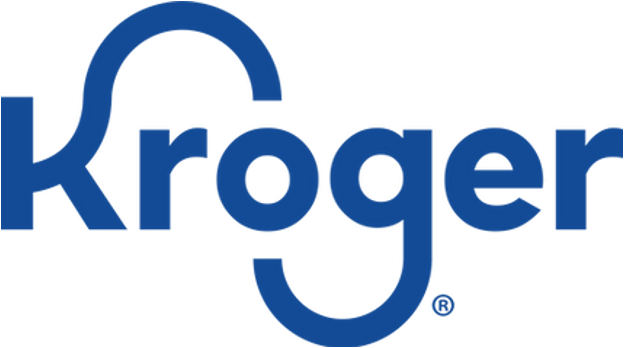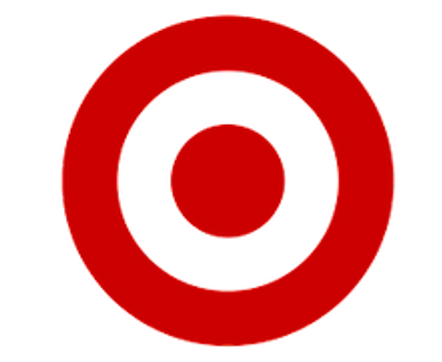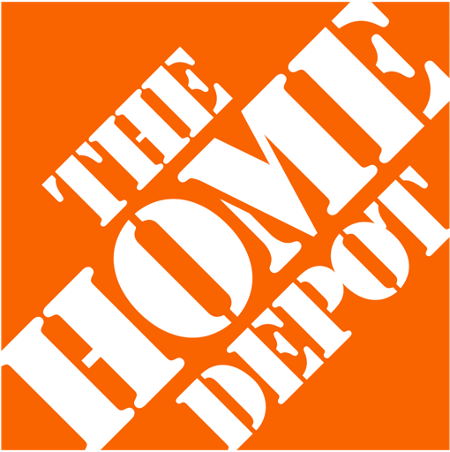The following analysis is the final part of a “Digital Commerce Roadmap” series that The Mars Agency publishes annually to provide a comprehensive overview of key digital marketing opportunities available across leading retailers.
Read Part 1: Winning Organic Search
Read Part 2: Driving Traffic to Retailer Websites
Read Part 3: Winning with Ratings & Reviews
Or, download the complete report here.

The final subject in our Digital Commerce Roadmap series is one that’s finally gaining dedicated resources from an increasing number of brands: optimizing the digital shelf. While the prior subjects — organic search, traffic driving and ratings & reviews, are all critically important, the digital shelf provides the bedrock for success as the final checkpoint on the path to purchase.
One of the simplest but often overlooked aspects of running a successful ecommerce business is to “walk the store” for your brand and product category: capturing screen shots of what competitors are doing with their PDPs (product detail pages) and regularly tracking how often they update their brand stores to understand how you’re stacking up against best-in-class strategies.
Through our work with ecommerce leaders around the globe, it’s evident that optimizing the digital shelf by bringing content to life in various formats involves two important elements: messaging creativity on the brand’s part, and technological maturity on the retailer’s part.
Retailers recognize this fact, too, and have started to publish digital shelf or content scorecards for their brand partners — although few to date have reached the level of maturity needed to grade content quality.
Optimizing the digital shelf, therefore, demands a blend of art and science — a choreography requiring brands to cater to shopper preferences while simultaneously meeting the criteria of retailer search algorithms designed to provide the most pertinent results.
But the effort is well worth it, because a well-executed digital shelf can dramatically improve conversion rates, culminating in increased sales for the brand and accolades for the ecommerce team.
Here is a rundown of tips and tricks for optimizing your shelf at our six leading retailers.
OPTIMIZING THE DIGITAL SHELF ON:

KEY CONSIDERATIONS
Historically, Amazon has steadily rolled out new content capabilities on an annual basis, tools like Amazon Live livestream shopping, Amazon Posts image-driven mobile experiences, and Brand Story carousel modules. We expect Amazon to continue expanding with these kinds of unique content features each year. This will create new opportunities for brands to quickly test & learn to determine what is and isn’t working.
Note that Amazon typically rolls out these features first in the U.S. or UK, so the teams responsible for those two markets should play a key role in sharing their learnings globally when new content opportunities become available.
In general, Amazon is heavily focused on conversion. On your PDPs, bullet points are especially important for driving conversion. You also should leverage your brand store for cross-selling across the product family, brand storytelling, and promoting tentpole events. Strategically speaking, ecommerce teams should think of the Amazon brand store as having the same goals as a multi-product display in a brick-and-mortar store.
CONTENT GUIDELINES
PRODUCT TITLE: 125 characters in length, with the most relevant search term mentioned 1 time.
IMAGE COUNT: At least 7, but most brands use 9 images or more to tell a more complete product story.
VIDEO: At least 1 video above-the-fold on the PDP: 69% of Amazon customers said they prefer learning about new products or services through video versus other media types like text-based articles or infographics, according to a Wyzowl study.
A+ CONTENT: This has become a must-have, and ideally should be product-centric rather than brand-focused. Premium A+ content is becoming more widely used by brands because it delivers stronger shopper engagement and a better mobile experience.
Remember that the order of content viewed by shoppers is different on Amazon’s desktop website vs. the Amazon app. On the latter, A+ content comes before product descriptions and bullets, which is why product-focused enhanced content will drive higher conversion.
STAR RATINGS: On average, products with review scores of 4.3 and above are better able to maintain a best seller ranking (BSR). The best-performing products typically have 4.6 stars or higher.
OPTIMIZING THE DIGITAL SHELF ON:

KEY CONSIDERATIONS
As previously discussed, Instacart obtains most of its product content from partnering retailers because many brands haven’t yet taken the initiative to create and provide content directly to the on-demand delivery giant’s product library — although they should.
As with other on-demand platforms, Instacart lets shoppers make purchases straight from search results by automatically including an add-to-cart button on results tiles. Shoppers subsequently can skip the step of reviewing product details entirely and make results-based purchase decisions. Therefore, mobile-optimized hero images, or optimized images with text strips conveying key details (product type, pack size and/or unit count), will work very well on Instacart.
CONTENT GUIDELINES
PRODUCT TITLE: Titles on Instacart are auto-generated, so make sure your product attributes are submitted correctly. If you are syndicating content, make sure titles are in the correct case because Instacart doesn’t change anything before publishing the content. Also, product titles truncate to approximately 50 characters in search results, so make sure you convey all the key information in that early window.
IMAGES: Set a regular cadence for auditing your syndicated content — it’s commonplace to find duplicate product images on Instacart. Make sure to use images that help convince shoppers to buy: several different angles of the same glass bottle, for instance, don’t do that.
OTHER TIPS: Instacart’s product listings carry buttons for various product colors and flavors, which works very well in some categories, such as snacks and confectionery. So make sure to submit your color and flavor attributes.
OPTIMIZING THE DIGITAL SHELF WITH:

KEY CONSIDERATIONS
Unlike other retailers, Kroger does not accept videos and other forms of enhanced content on any of its banner websites (now that Harris Teeter has adopted the unified look used elsewhere). Therefore, optimizing the digital shelf at Kroger is all about getting the basics right.
Kroger’s organic algorithm is heavily weighted to products with strong titles, so maintaining precision with search terms in the title matters a lot (even though, from a retail media perspective, Kroger sponsorships don’t run on keyword bidding). The retailer uses a default store to present search results, so inventory availability also plays a role.
CONTENT GUIDELINES
PRODUCT TITLE: There is a 100-character limit, but titles can truncate to just 70 characters on mobile phones. So make sure to convey all product information in that window.
IMAGE COUNT: Use 2 images at the very least, but most top-performing brands use the maximum 6 allowed. The use of accolades and award images varies by category, so ask your account manager or merchandiser about what’s allowed there.
VISUAL ASSETS: Kroger’s algorithm crawls alt-text within creative assets, so add product names and even contextual keywords to the image/asset name and alt-text fields to maximize shopper value. (If you’re unsure what alt text has been entered for your assets, you can find out by going to Kroger.com and reading the image’s HTML code.)
PRODUCT DESCRIPTION: Use 1-3 sentences in a short paragraph of 80 to 100 words for a product description that is unique to Kroger. Repeat the product title within the description.
OPTIMIZING THE DIGITAL SHELF ON:

KEY CONSIDERATIONS
Like Kroger, Target uses a nearby store as the default when displaying search results, even if the shopper is using incognito mode. That means different results will appear if the store is changed — which makes optimizing the digital shelf to win share of voice extremely important.
Target has a standardized icon system to help guests easily find and identify the wellness product attributes most important to them. Auto-generated based on submitted product attributes and placed in eye-catching spots on PDPs, these icons are very impactful in driving sales. So be sure to submit all product attributes correctly.
CONTENT GUIDELINES
PRODUCT TITLE: 150 characters is the maximum length, with the most relevant search term mentioned 1 time.
IMAGE COUNT: Use at least 5 images without any text overlays. On desktops, the second image is what appears when shoppers hover their arrow over the product tile on search results pages, so make sure that is a good; some best-in-class examples include lifestyle imagery or an angled product shot that resembles the package being flipped.
PRODUCT COPY: Copy with 6 bullet points is ideal, although some brands go to 8. Use no more than 100 words per bullet.
VIDEO: Target requires at least 1. The video must be closed captioned, with a converting thumbnail image that attracts clicks and increases viewership.
AVERAGE STAR RATING: 4.0 or higher.
OPTIMIZING THE DIGITAL SHELF ON:

KEY CONSIDERATIONS
The Home Depot’s search algorithm is highly related to three pieces of the PDP: number of reviews, rating, and number of images.
Although the algorithm isn’t directly related to product title length, keyword quality within the product title matters a lot. Short-tail category keywords work best, since Home Depot’s search engine is configured better for delivering results with short-tail keywords (e.g., faucet, bathroom vanity) than long-tail, contextual keywords (e.g., faucet in silver, bathroom vanity with 3 drawers).
CONTENT GUIDELINES
PRODUCT TITLE: The ideal length is 70-80 characters, with the most important keyword mentioned at least once.
PRODUCT COPY: Use at least 3 complete sentences but a maximum of 1,500 characters. Include the product name in the first sentence, then state the product features, and finally list the specific benefit or value to the customer.
IMAGE COUNT: Using at least 6 images will improve search visibility, but most winning products have 8 or 9 images. Lifestyle images are expected.
VIDEO: At least 1 of your image spots should be devoted to a product video or a 360-degree image.
RATINGS: Achieve 4.3 stars at a minimum but aim for 4.6. When undertaking DIY projects, Home Depot shoppers tend to have higher expectations and are far less tolerant of lower-rated products.
OPTIMIZING THE DIGITAL SHELF ON:

KEY CONSIDERATIONS
Walmart updates its digital shelf requirements more often than any other retailer, and the specifications vary slightly across product categories. The most important strategy for brands, then, is to work closely with your account manager or merchandiser to stay on top of the information.
Walmart’s algorithm is heavily weighted to the number of images and reviews on the page. In general, however, we’re still seeing products carrying far more reviews on Amazon. But we think it’s critical for brands to adopt the right strategy for soliciting more reviews on Walmart.com.
CONTENT GUIDELINES
PRODUCT TITLE: Walmart accepts up to 200 characters on product setup forms, but only about 70 will show up on the website’s desktop version and just 40-50 on the retailer’s app. So make sure your Walmart product titles are succinct.
IMAGE COUNT: Although Walmart says there is no limit to the number of images a brand can upload for a product, and some categories want brands to use as many as 18, we find that pages with 10 are the most effective at converting.
PRODUCT DESCRIPTION: Walmart allows 80 characters max per bullet point, and up to 4,000 characters in total for all content (title, bullets, shelf description, short and long description). Use 3-10 bullets to highly product features, and always use short phrases or keywords.
REVIEWS: Requires a minimum of 100 ratings & reviews. Number of reviews meeting the benchmark is counted towards in the Walmart content health score.
Download the complete report here.
_____________________
The Mars Agency’s Ecommerce team knows that succeeding through online marketplaces requires quality content, winning the search algorithm, and a whole lot more. Our experts take clients to a new level of success by providing end-to-end business management, including operations, advertising, and digital shelf optimization. Using the agency’s proprietary data platform, our Digital Shelf Shop creates, enhances, and optimizes client activity across the ecommerce landscape, helping them beat the competition and convert shoppers.
For more information, contact Kristin Wall, VP-Ecommerce.